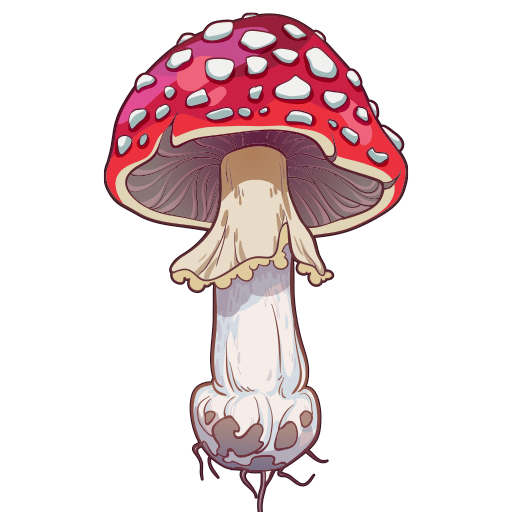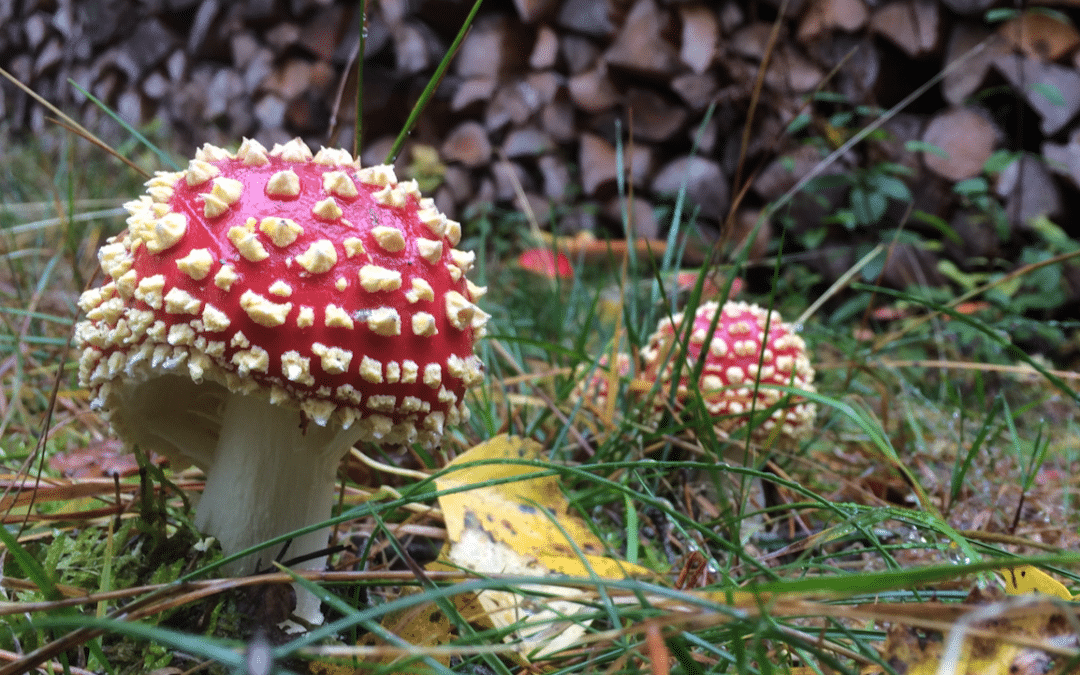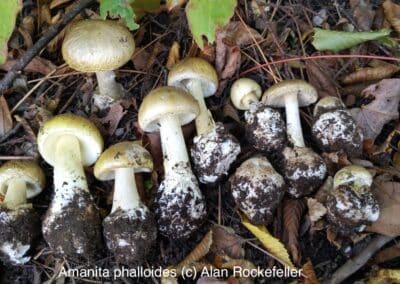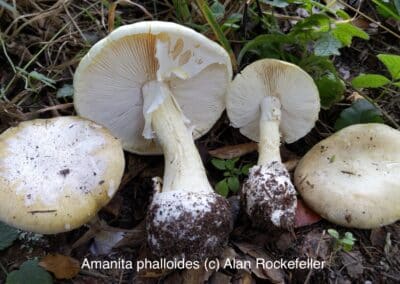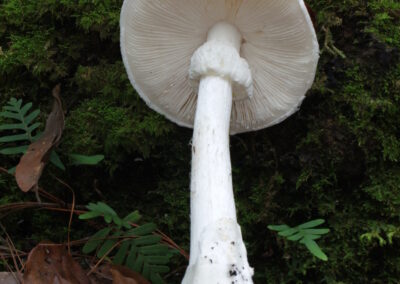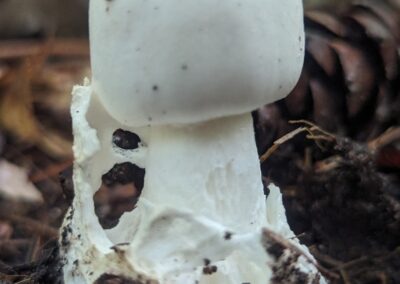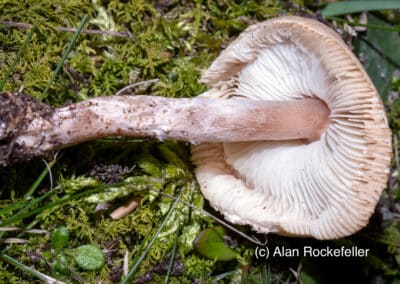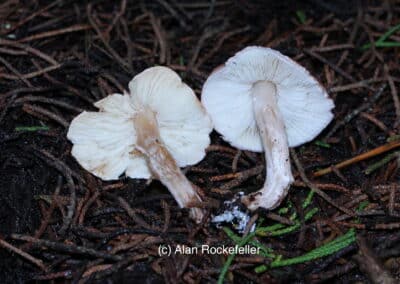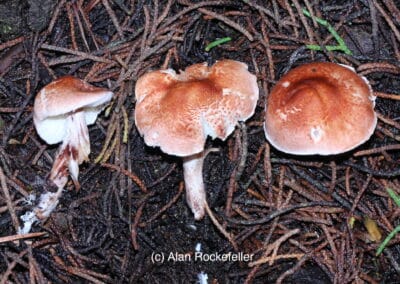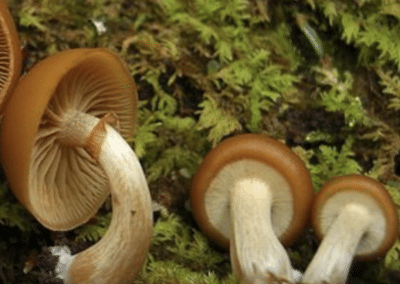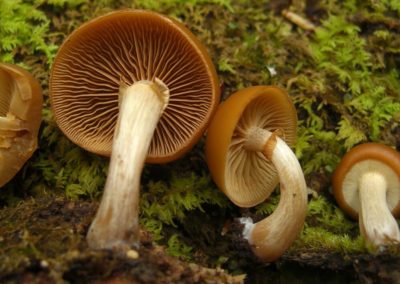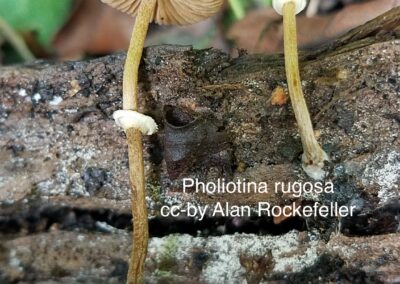What do you do if you suspect that you, someone else, or a pet has eaten a poisonous mushroom?
Time is critical. Quickly do the following
1) Gather information for accurate identification.
- Collect one or more complete mushrooms including the base of the mushroom that may be below the surface of the soil
- Take clear photos of the top, underside, and base of the mushroom. Extra light, steady hands, and attention to the distance between camera and the mushroom will help with crisp photos
- If you can’t get any of these, pieces of the eaten mushroom and a good description may be adequate
2) Try to determine if it’s one of the following general types of mushrooms
There are very few mushrooms that when eaten can cause lasting harm or death. Most physicians and veterinarians will never encounter a patient who has consumed one of these.
If you believe the mushroom is one of these general types, you must get help immediately. These mushrooms contain amatoxins which require immediate attention to improve patient outcomes.
Amanita
Seriously poisonous Amanita mushrooms have:
– Light-colored gills
– Gills are not attached to the stem. (free attachment, or a gap between gills and stem)
– Do not have warts on the cap (like the mario mushroom or classic toadstool)
– Do have a bulbous base often with loose tissue around the egg-like sac
There are many other species of Amanita mushroom including the famous Amanita muscaria / mario mushroom / toadstool shown at the top of the page. These do contain toxins but are not nearly as serious as these species listed.
Lepiota
Small Lepiota may also be seriously toxic but most are not. General characteristics of Lepiota include:
– Light-colored gills (white)
– Gills are not attached to the stem
– Partial veil. Tissue covering the gills of young specimens that is often still visible as bits of tissue around the outer rim of the cap or more commonly, as a ring of tissue on the stem. Some Lepiota species have a veil made up of very fine fibrils which may not be visible as the mushroom matures
– Often colored cap that breaks up into scales as the cap expands
The most seriously toxic Lepiotas have pinkish hues and a fruity scent. (link)
Little Brown Mushrooms
These mushrooms are unlikely to be eaten intentionally by adults due to their small size. They can however be mistaken for psychedelic mushrooms. These can grow on wood, or the ground in duff.
A key characteristic of both seriously toxic species is the presence of tissue covering the gills of young specimens known as a partial veil, or remnants of this partial veil left as a ring on the stem. Many other non-toxic species also share this characteristic.
Two species that contain the seriously toxic amatoxins are Galerina marginata, and Pholiotina rugosa.
3) Next Steps
Human Poisoning – If you cannot rule out all of these mushrooms or are still unsure, contact your local poison control line immediately.
Animal Poisoning – Call your vet, animal hospital, or animal poison line
Post photos and a description to one of these Facebook groups. Poison control might also use these pages to help identify a poisonous mushroom.
https://www.facebook.com/groups/144798092849300
https://www.facebook.com/groups/PNWMushroomID/ (Pacific Northwest US)
Other Toxic Mushrooms
The groups above are the most seriously toxic mushrooms but there are other toxic mushrooms that can be deadly in larger amounts. Many people even have reactions to classic edible mushrooms like morels, chicken of the woods, and in rare cases, just about every other edible mushroom. The most common symptoms are GI distress, diarrhea, or vomiting.
It is still important to properly identify the mushroom for assistance with possible poisoning however treating amatoxin-related poisonings from the mushrooms above requires the most urgent attention.
